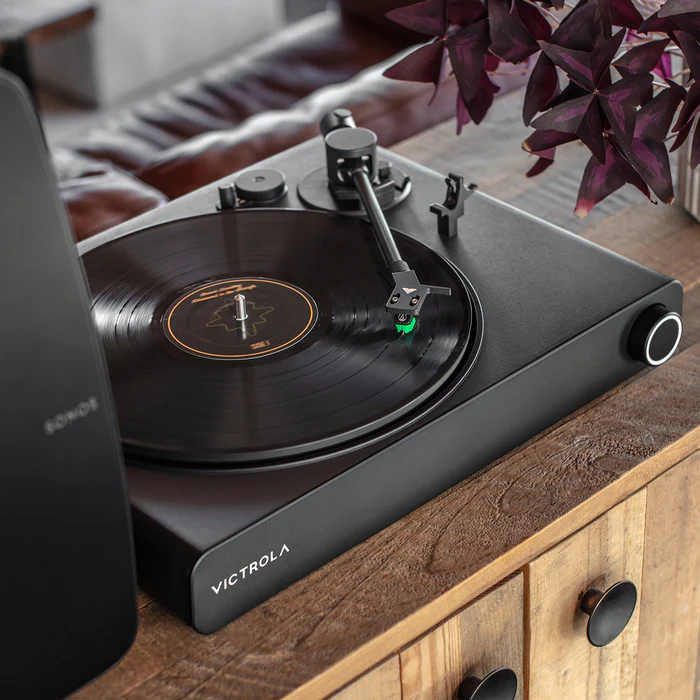Old gramophone records are more than just music storage—they are living pieces of history. Whether it’s a Hindustani classical performance from the 1940s or a vintage Bollywood vinyl records score pressed in shellac, these records capture the essence of a bygone era. However, the fragility of gramophone records and the decline of compatible playback equipment make it crucial to preserve this audio heritage in digital form. Converting old gramophone records to digital not only saves the music from physical deterioration but also allows you to enjoy it on modern devices. This guide will walk you through the entire process, from preparation to final audio files.
Understanding Gramophone Records
Before diving into digitization, it’s important to identify the kind of records you have. Early Indian gramophone records were mostly made of shellac, especially the 78 RPM format. These are more brittle than vinyl and require specialized equipment for playback. Unlike vinyl LPs and 45s, which became popular later, shellac records typically contain one track per side and may have significant surface noise. Digitizing them requires gentle handling, the right tools, and an appreciation for their historical and musical value.
Step 1: Inspect and Clean Your Records
Begin with a visual inspection. Check for deep cracks, breaks, or warping. Some damage may make playback difficult or risky. Before digitization, thorough cleaning is essential. Use a soft, dry brush or microfiber cloth to remove dust. For deeper cleaning, a solution of distilled water and isopropyl alcohol (in low concentration) can be gently applied with a lint-free cloth. Avoid using tap water or household cleaning chemicals, which may damage the shellac.
Step 2: Gather the Right Equipment
To digitize gramophone records, you’ll need a few specific items:
- Turntable: Choose a turntable that supports 78 RPM. Not all modern turntables do, so check the specifications before purchasing or borrowing one.
- Stylus/Cartridge: Use a stylus designed for 78 RPM shellac records. Regular LP styli are too narrow and may damage the grooves or fail to capture the correct audio.
- Preamp or Audio Interface: Gramophone records require signal amplification. A phono preamp is necessary if your turntable doesn’t have a built-in one. For better control and quality, consider an audio interface that connects to your computer via USB.
- Computer with Audio Software: Use a computer with audio editing software such as Audacity (free and open-source), Adobe Audition, or GarageBand. These programs allow you to record, edit, clean, and export your files.
- Cables and Connectors: Ensure you have RCA cables, adapters, or USB cords to connect your turntable and preamp to your computer.
Step 3: Set Up and Connect
Connect your turntable to the preamp if it doesn’t have a built-in one. Then connect the preamp to your computer’s audio input or audio interface. If you are using a USB-enabled turntable, simply plug it into your computer. Open your audio software and set the correct input device. Make sure the sampling rate is set to at least 44.1 kHz and the bit depth to 16 or 24 bits for quality preservation.
Step 4: Test Before You Record
Play a short section of the record and observe the audio levels. Ensure that the waveform doesn’t clip (go beyond the limits) and that the signal is audible but not distorted. Adjust input gain or volume accordingly. Use headphones to monitor for any buzz, hum, or unwanted noise from cables or grounding issues.
Step 5: Record the Audio
Once levels are set, begin recording the entire side of the record. Let the track run uninterrupted to preserve the continuity. After one side is done, stop the recording and flip the record to repeat the process. Make sure to label and save each file appropriately to avoid confusion.
Step 6: Edit and Clean the Audio
Once your recordings are complete, use the editing software to trim the start and end points, remove silent gaps, and normalize volume. Most software has built-in tools for noise reduction, click and pop removal, and EQ adjustments. Be conservative with filters so you don’t eliminate the warmth and authenticity of the original sound. Remember, some surface noise is part of the charm of old records.
Step 7: Export to Digital Format
After editing, export the final files to digital formats like WAV for high-quality archiving or MP3 for easy sharing and playback. Keep both high-quality and compressed versions. Label each file with artist name, title, year, and record number if available. Consider organizing them into folders by genre or decade for easy navigation.
Step 8: Backup and Share
Save your digitized files to multiple locations: your computer, an external hard drive, and a cloud service. This ensures long-term preservation and prevents loss. You can also share the files with family, music historians, or local libraries that may be interested in rare Indian audio recordings.
Converting gramophone records to digital format is a rewarding task that blends technology with heritage preservation. It allows you to breathe new life into vintage recordings and ensures that the music of the past can still be heard by future generations. Whether you’re preserving devotional music, early film songs, or forgotten classical gems, each digitized track becomes part of an evolving archive of Indian sound history. With the right tools and a little patience, your old gramophone collection can live again—clean, clear, and ready for the modern world.
